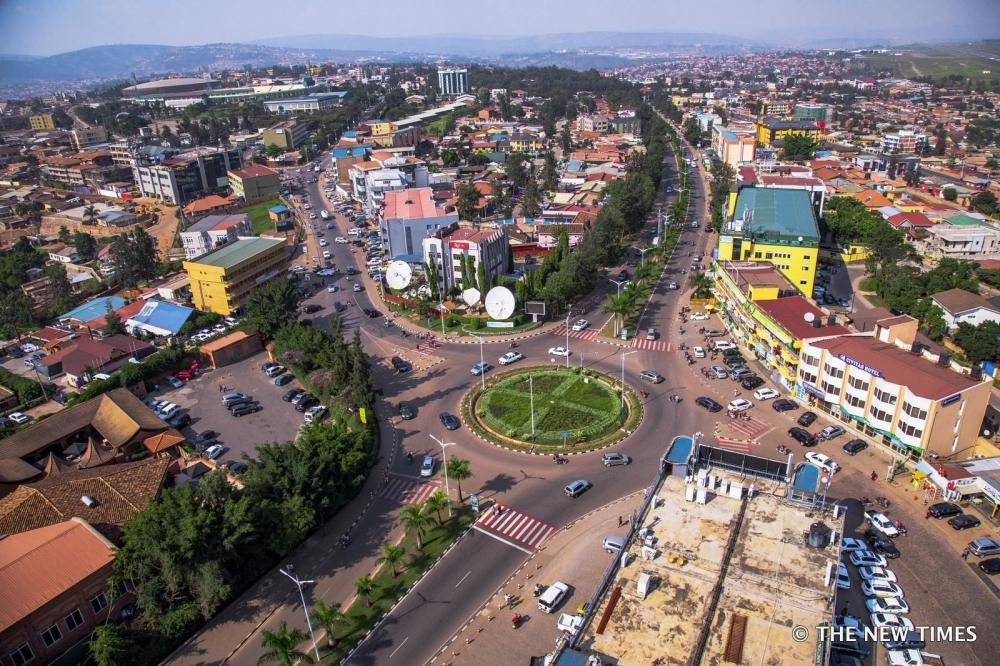Africa-Press – Rwanda. The Ministry of Infrastructure has announced the beginning of a major transformation of Sonatube, Gishushu and Kwa Lando road junctions under the Kigali Urban Transport Infrastructure (KUTI) project.
The overhaul is aimed at easing traffic congestion, improving road safety, and modernising transport networks in the capital.
According to the Minister of Infrastructure, Jimmy Gasore, more junctions in Kigali will be transformed.
“We are starting with the junctions at Sonatube, Gishushu, and Kwa Lando, for which the funds are already secured, and work will begin soon,” Gasore told the Senate Committee on Foreign Affairs, Cooperation and Security on October 9.
The next phase will extend to Nyabugogo, Kinamba, Rwandex, and Kibagabaga, once funding is secured, he added.
Flyovers and underpasses
Technical studies conducted by the Rwanda Transport Development Agency (RTDA), in collaboration with the African Development Bank (AfDB), recommended a combination of flyovers, underpasses, and geometric improvements to enhance traffic flow at the targeted intersections.
At Kwa Lando junction, engineers propose a 740-metre underpass tunnel, including signalisation and geometric improvements, whereas at Gishushu junction, a 500-metre flyover bridge will be built to separate traffic levels and improve connectivity along the same road.
Meanwhile, the Sonatube junction will feature a 620-metre underpass along KN3 Road (toward Rwandex) to facilitate smoother traffic movement and reduce congestion.
Minister Gasore explained that these interventions are expected to ease traffic bottlenecks, particularly during peak hours, while ensuring safer pedestrian crossings and improved road geometry.
“While the initial upgrades target three intersections, designs for the remaining junctions; including Nyabugogo, Kinamba, Rwandex and Kibagabaga have also been proposed,” he said.
The Nyabugogo junction redesign includes two new flyovers, a 400-metre bypass road, and improved junction layouts to accommodate heavy throughway traffic, while the Rwandex junction plan involves a new four-lane bypass, with two ramp bridges minimizing impact on the Gikondo wetland.
At Kibagabaga, the road will be expanded to four lanes, while Gisozi junction will feature a 540-metre flyover to boost capacity.
The ministry noted that all designs are expected to integrate inclusive features for persons with disabilities. These will include braille traffic lights with audible signals, accessible pedestrian crossings, short ramps, and covered drainages to ensure safety and convenience for all road users.
Smarter traffic management and new technology
The Minister also said that Kigali will soon introduce Variable Message Signs (VMS), electronic displays that provide real-time information to motorists about traffic conditions, accidents, and weather updates.
“These systems help inform drivers about congestion ahead, detours, or road closures, allowing them to make better decisions,” Gasore explained.
He added that if the system proves effective in Kigali, it will be rolled out to other cities across the country.
The VMS initiative is part of a broader smart-traffic management approach that also includes the International Road Assessment Programme (IRAP).
“Through IRAP, the country will be able to assess road safety performance every 100 metres and develop data-driven strategies to reduce accidents,” he said.
Despite Kigali’s rapid urbanisation, the city still faces major transport challenges, including limited public transport integration, inadequate non-motorised transport infrastructure, and the absence of dedicated bus lanes. These gaps have contributed to increased use of motorcycle taxis, which, while convenient, pose higher safety risks.
Gasore explained that the KUTI project will prioritise designated bus lanes to encourage public transport over private vehicles.
Some lanes may be reserved exclusively for buses during peak hours, with smart traffic lights prioritising high-capacity routes and road designs will also accommodate larger buses, improving efficiency for the city’s growing number of vehicles.
Last December, the African Development Bank had already approved a loan of Rwf140 billion for the implementation of the KUTI project, whose total cost is estimated at $279 million (approximately Rwf386 billion).
The project is expected to run over five years, focusing on delivering a modern, sustainable, and user-friendly transport system that aligns with Kigali’s long-term vision as a smart, inclusive, and green city.
During the session, Senator Evode Uwizeyimana urged authorities to pay closer attention to pedestrian safety features, particularly at junctions where zebra crossings are located too close to roundabouts or where traffic lights do not clearly indicate pedestrian signals.
“Some zebra crossings are placed at corners or immediately after turns, creating sudden risks for both drivers and pedestrians,” he noted.
Gasore assured that such issues will be addressed in the new designs to ensure safer, more efficient movement for all road users.
For More News And Analysis About Rwanda Follow Africa-Press






